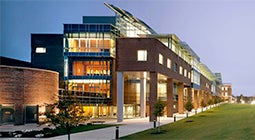
Understanding the basic principles and applications of nuclear magnetic resonance (NMR), magnetic resonance imaging (MRI), and x-ray computed tomography (CT)
NMR spectroscopy is a primary tool routinely utilized for validating chemical structure and quantifying composition.
NMR also plays important roles in drug discovery and is widely used to screen chemical libraries for lead drug candidates, determining the 3D structure of biomolecular targets in complex with drug candidates at atomic resolution, and validate protein-protein interactions proposed to be critical in human diseases.
MRI is a non-invasive imaging resource used across a diverse range of applications in medicine. It is also able to provide unique clinical indicators and diagnostics.
CT imaging is used in a wide range of medical diagnostic and therapeutic procedures as well as industrial quality control and critical inspection applications.
The goal of this course is to introduce attendees into how NMR can aid drug discovery and manufacturing, as well as play a role in characterizing key players involved in human diseases. They will also learn about MRI and CT imaging technologies and the complementary strengths of these applications.
Sessions:
- Application of NMR Spectroscopy and interpretation of results
- Basic principles and Applications in Magnetic Resonance Imaging (MRI)
- Introduction to X-ray Computed Tomography (CT) and its Applications
Contact:
Scott McCallum, Ph.D.
Director, NMR and BioImaging Core Facilities
Shirley Ann Jackson, Ph.D. Center for Biotechnology and Interdisciplinary Studies
Rensselaer Polytechnic Institute
E-mail: mccals@rpi.edu
